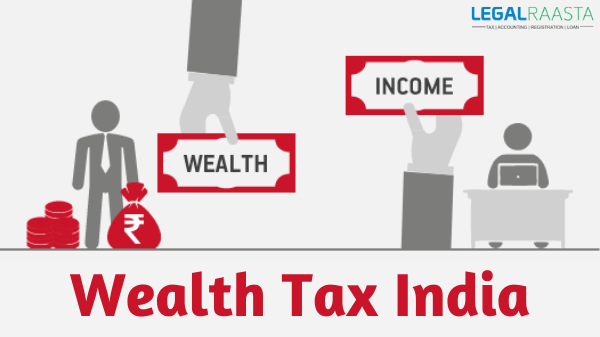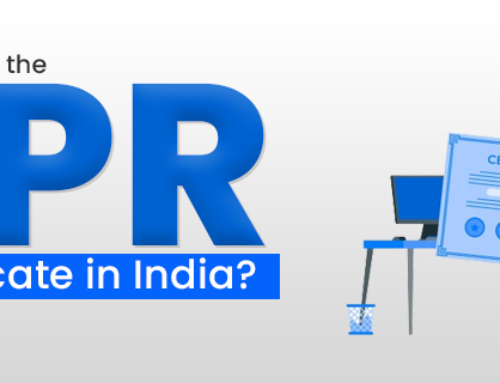A brief history of wealth tax in India
Contents
After the independence of India in 1947, the Indian Income Tax Act 1922 was the primary legislation governing the charge of direct taxes. With the Nehru-led Government in power, the inclination in the economy in the initial years after independence was towards greater socialism. There was an advanced taxation regime with higher taxes being levied on the rich. There were many difficulties in the Indian direct tax system resulting in heavy tax evasion. Therefore, the Government of India set up the Kaldor Committee in 1955 to rationalize the tax system and bring about affirmative reforms. The Government has drawn up a composite and integrated tax structure plan, in line with the recommendations made by the Kaldor Committee, so as not to avoid any appraisal of income. Thus, the Wealth Tax Act (WTA) was introduced in 1957 as a permanent measure. In 2015 it was removed because of a series of proceedings challenges, including large-scale disputes, higher compliance burdens, significant management costs, and insufficient revenues. There is currently no real support to re-establish the wealth tax.
Who in India needs to pay a tax on wealth?
While property taxes are currently abolished, the tax applies to individuals, HUF, businesses, etc. are liable to pay wealth tax. In addition, the tax applies to individuals and to private individuals. Residential status is the main factor for property tax applicability. One thing more, this taxon their global assets is applied to resident Indians. However, the taxation of wealth is also payable to non-Resident Indians (NRIs) which fall within the scope of the property tax on their assets held within India.
In recent years, the wealth tax increased revenue as follows:
TABLE 1: REVENUE RAISED BY WEALTH TAX
| Year | Gathering (INR (billions)) | Year | Gathering (INR (billions)) |
| 2003-04 | 1.36 | 2009-10 | 5.05 |
| 2004-05 | 1.45 | 2010-11 | 6.87 |
| 2005-06 | 2.50 | 2011-12 | 7.87 |
| 2006-07 | 2.40 | 2012-13 | 8.44 |
| 2007-08 | 3.40 | 2013-14 | 10.07 |
| 2008-09 | 3.89 | 2014-15 | 10.86 |
When the wealth tax was introduced in India in 1957, the taxation system in India had multiple taxes attached with high rates. Such a structure was more intimidating rather than progressive as well as was leading to economic instability. In 1991, India decided to liberalize its economic and fiscal policies to attract global capital. In 1993, the Wealth Tax Act was modified to cover only unproductive and idle assets, previous to which it was levied on all assets of an assessee. According to remarks made by successive committees set up by the Government in the post-liberalization time, the impose faced numerous administrative challenges such as wide litigation on estimate matters, inadequate tax yield, high costs of administration, etc. With effect from April 2015, the government agreed to abolish wealth taxes in India, taking into account all of the above factors. As a measure to partly offset the revenue loss on account of the abolishment of the wealth tax, the Government decided to increase the surcharge levied taxes on the wealthiest individuals by an incremental rate of 2% in the same year.
The objective of a direct taxation regime is to ensure progressivism in the levy of taxes, i.e., tax the rich and incentivize the poor to achieve higher degrees of economic equality. This mainly makes the levy of such a tax justifiable. Though, when such a progressive taxation regime imposes heavy rates of taxes even at moderately high levels of income, it may be perceived as unfair. One of the major problems in India up till the 1990s was the excessively high rates of taxes which led to large-scale evasion.
Until 1991, the business environment was largely subjugated by public sector undertakings and the policy framework was not friendly towards private enterprises. Thus, even though wealth tax hurt entrepreneurship, it was part of the policy objectives of the government in power at the time, which justified the levy.
Though, after 1991, the laws were amended to embrace globalization, prompting a radical reduction in the opportunity of wealth tax so that it covered only unproductive as well as idle assets, and thus did not prevent the promotion and incentivization of start-ups.
The tax was levied over the whole of India at a uniform rate, including in the Union Territories of Jammu and Kashmir as well as Ladakh. Note that there are now no annual taxes remaining on ownership of the real estate and shares in India.
What assets were taxed? Exemptions and reliefs
When the Wealth Tax Act was introduced in 1957, all assets unless specifically excluded were subject to wealth tax. Subsequently, due to policy changes of the Government after the globalization of the Indian economy in 1991 (see above), the scope of the wealth tax was limited to only a few specified assets. This largely dealt with liquidity and valuation problems. The same is covered in detail in Table 2 below.
| Before 1993 | After 1993 |
| All kinds of property excluding only: | Only the following properties were charged to WT: |
| i) Agricultural land as well as growing crops, grass, or standing trees on such land.
ii) Any building owned as well as occupied by a cultivator of, as well as the receiver of rent and revenue out of, agricultural land.
iii) Animals
iv)Right to immunity in any situation where the terms and conditions governing it prevent any portion of it from being commutated into a lump sum grant. iv) Any property interest in which the holder has access to the interest for a period of not more than six years from the date the interest vests. |
i) any building or land appurtenant thereto (hereinafter referred to as ‘house’), whether used for residential or commercial purposes or for the purpose of maintaining a guest house or otherwise, excluding:
– House for residential purpose. – House for residential/commercial drives creating a portion of stock-in-trade. – House occupied for business/profession. – Residential property let out for more than 300 days in the year. – Any property in the nature of commercial establishments as well as complexes. – Agricultural land |
| vi) pensions. | ii) motor cars excluding:
– those run by cab aggregators; – stock-in-trade; |
| iii) jewelry, bullion, furniture, utensils as well as any other article made wholly or partly of gold, silver, platinum or any other precious metal or any alloy containing one or more of such precious metals other than stock-in-trade; | |
| iv) yachts, boats as well as aircrafts other than those used for commercial purpose; | |
| v) urban land; | |
| vi) cash in hand, in additional of fifty thousand rupees, of individuals and Hindu undivided families. |
A special exemption was also given in the case of Gold deposit bonds issued under the Gold Deposit Scheme of 1999 by the Government of India. Pensions were exempt.
Wealth tax was a charge levied on the total as well as the market value of personal assets. Also known as capital tax as well as equity tax, wealth tax was imposed on the richer sections.
Certain specified properties, such as buildings or property, cars, jewels, bullion, yachts, vessels, as well as aircraft, urban land, and cash in hand exceeding a certain sum, were subject to the wealth tax. A net wealth tax deducted liability from an individual’s wealth, primarily mortgages and other loans.
Conferring to the Wealth Tax Act, 1957, an individual, Hindu Undivided Family (HUF), as well as companies are required to pay wealth tax at the rate of 1 percent on net wealth exceeding Rs 30 lakh as on the preceding day of the financial year. The Act was applicable across India.
The application of the Wealth Tax Act was, though, discontinued on April 1, 2016, due to a low level of awareness as well as yield, besides an increased cost of collection as well as an administrative burden.
The wealth tax was abolished in the Union Budget (2016-2017) on February 28, 2016, and replaced with an additional surcharge of 2 percent on the wealthy (those with annual taxable income exceeding Rs 1 crore). Wealth tax mainly targeted wealthy people with substantial assets either received through legacy or earned on their own.
Also Read, Key Highlights of Union Budget 2020-21
The wealth tax was not part of the Income Tax Return (ITR) as well as was a form of direct tax required to be paid separately at the end of each financial year.
The following were not covered under Wealth tax:
* Co-operative Societies
* Establishments registered under Section 25 of the Companies Act, 1956
* Social clubs
* Political parties
* The Reserve Bank of India
* Mutual Funds listed under Section 10(23D) of the Income Tax Act
* Trusts
* Artificial Judicial Persons
* Partnership firms
* Association of persons (AOPs)
The following assets were exempted from wealth tax:
* Property held under trust for charity/religious purposes
* An wealthy person’s (ruler’s) possession of jewelry is not considered personal property.
* A self-occupied residential house as well as a plot of land that does not surpass 500 square meters
Also, a residential house, as well as a commercial building which formed part of stock-in-trade or any house that the taxpayer might be occupying for business or profession carried out by them or property like commercial establishment or complexes, were excluded from the purview of wealth tax.
If a taxpayer had more than one house property, the additional house properties were exempt from wealth tax if they had been rented for at least 300 days in the previous year.
Wealth tax was typically levied on non-productive assets. Thus, productive assets like mutual funds, fixed deposits, exchange-traded gold funds, and savings bank accounts, too, were not included in wealth tax.
Relationship with other taxes When the WTA was introduced in India, as part of a comprehensive scheme of taxation, gift tax, inheritance tax, and expenditure taxes was concurrently introduced. Capital gains tax (CGT) was already in place in India before the introduction of said taxes. However, most of these taxes have now been abolished. Now, only CST as part of income tax is in power. Today, there is no tax in India levied on wealth or expenditure. Estate duty was also abolished in 1985.
Each tax had its own separate computational provisions. Wealth tax and income tax were not based on the same tax base. Reliefs and rates in all the above taxes, agronomic assets were exempted altogether. Also, charitable and religious trusts were exempt subject to satisfaction of prescribed conditions. Apart from the general reliefs, specific policy-related reliefs such as direct taxation on Special Economic Zones, Export Oriented Units, and Domestic Tariff Areas were granted a general exemption. Inheritance tax rates were progressive and rose as high as 85% on estates exceeding 2 million Indian rupees.
The gift tax rate was 30% on the donation, with a basic exemption of 30,000 Indian rupees. Wealth tax was not deductible and creditable against any other tax. Relief was not given against wealth tax for charitable donations, although a deduction for charitable gifts was given under the income tax regime. One of the primary objectives for the introduction of wealth tax was to obtain information that could be used in other areas of the tax system. However, such information sharing did not bring about the desired results in terms of revenue.
Planning and enforcement/collection as well as assessment Avoidance and non-compliance to avoid wealth tax legally, people typically used to generate income from immovable properties such as rent. As per the interim report of the Tax Reforms Committee, large-scale evasion of wealth tax was taking place in India during the late 1980s. Although no numbers were provided in this report, the yield of the wealth tax was observed to be significantly lower than expected, indicating large-scale evasion. Targeted anti-abuse rules have been in force for a long time in India.
However, they never covered wealth taxes. Collection and assessment Assessment of wealth taxes was based on self-assessment, with cases then chosen for selective scrutiny. An assessee had to file an annual return along with the tax payable which would then be scrutinized by the revenue authorities. The administrative costs were thought to be high for both taxpayers and the Revenue. The Revenue authorities could reopen any assessments within four years. Taxpayers could amend a return within one year.
Penalties and interest provisions (and indeed enforcement generally) were similar to those used for income tax. Actual payment of the tax was made before the filing of the return. The Revenue had wide powers to audit and investigate returns (although the actual annual number is unknown), including requiring the taxpayer to produce his account books, sign statements of declaration of wealth, and conduct searches for unreported wealth. Wealth tax appeals an order passed by the Assessing Officer was first appealable to the Commissioner (Appeals). Such orders could be challenged in the Income-tax Appellate Tribunal, and thereafter in the High Court and Supreme Court of India. Instead, an assessee could also make an application to the Wealth Tax Settlement Commission constituted under the Wealth Tax Act when any proceeding against the taxpayer was pending at the Assessing Officer level.
What happens when you don’t pay wealth tax?
Since your Permanent Account Number, or PAN, is required for all financial transactions, a tax officer can track your investments, including the purchase of jewelry, property, cars, etc., easily.
If your income file is processed, the inspecting officer has the authority to request a ‘news report’, which is a summary of all your assets and liabilities. This will also help the auditing officer to determine if you are responsible for the property tax.
The consequences of not submitting property tax returns or filing incorrect returns are severe. The provisions of the general audit applicable to income tax also apply to property tax. Interest on 1% per month is payable for failure to pay property tax on the due date.
There are also provisions for imposing fines and/or prosecuting a person for not submitting property tax returns.
Conclusion
The wealth tax was calculated on the market value of all the assets, regardless of whether or not they reported returns. Every individual with net wealth above Rs. 30 lakh and Hindu Undivided Family was required to pay property tax. As of March 31, the property tax was based on the asset valuation and would therefore apply to any assets acquired at the end of a financial year. However, a wealth tax would not apply to assets sold during the year. Some double tax evasion agreements (DTAAs) in that country have significantly given taxpayers relief from wealth tax if in any other country they have already paid it.
With LegalRaasta you can easily register for a wealth tax. Our expert team will help you in every part connected with it. You can simply download our app which is easy to access in android mobiles LegalRaasta APP. Even you can give us a call at 8750008585 and feel free to send your query on Email: [email protected]






